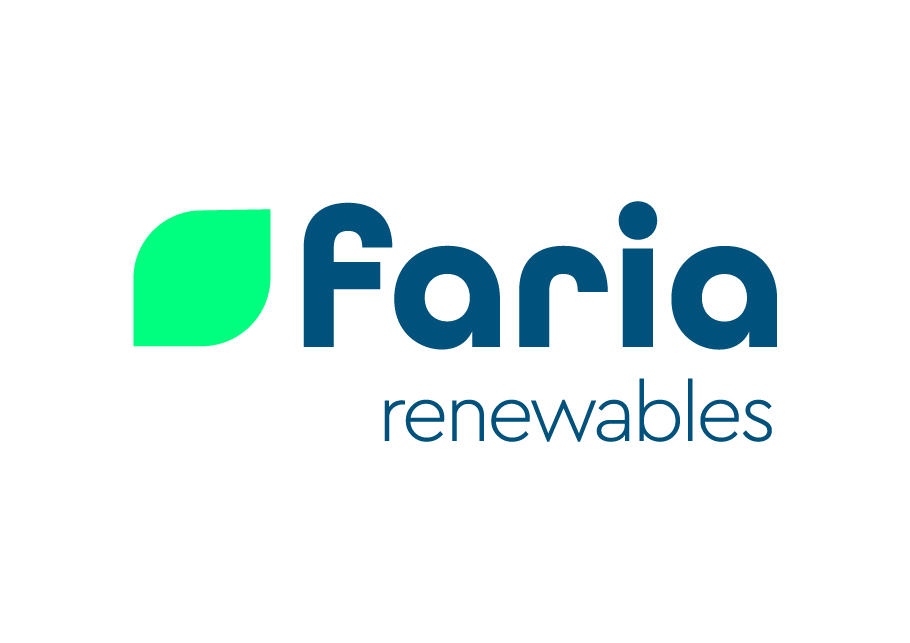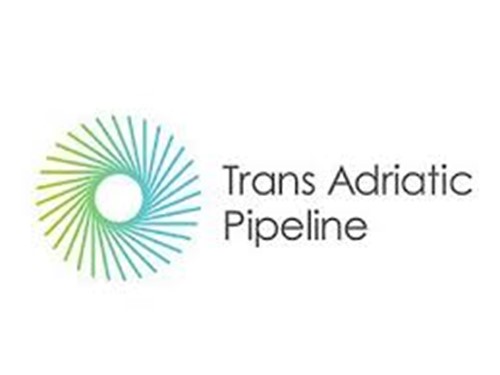Introduction
Energy policy aims to achieve multiple objectives. These include sustainability, security, access, and affordability, even in developed economies as high energy costs can hit households hard particularly in low-income groups. Also, for many countries, energy policy is strongly interlinked with development policy, thereby enhancing the competitiveness of real economies and promoting industrialization and technological leadership.
Policymakers, particularly in Europe, have for decades enjoyed a very benign environment: relatively robust economic growth, low inflation, low interest rates, globalized supply chains and abundant and relatively low-cost energy, including pipeline gas. As a result, energy security and affordability fell down the policy agenda and sustainability and climate action to achieve net zero targets rose.
One of the major impacts of the Russia-Ukraine war but more generally the rise in global geopolitical tensions has been the reordering of priorities. Affordability and security of supply are now dominant. With this reprioritization, important dimensions have come into focus. These include the trade-offs involved in achieving multiple energy policy objectives; the role of governments versus markets; the role of hydrocarbons in the future energy mix; the provision of finance to enable the transition especially for developing economies; the rise of industrial policy and its links with green policies; and coordination and cooperation on climate action in a geopolitically fragmented world.
The trade-offs
Given the multiple objectives that energy policy aims to achieve, there are bound to be at least short-term trade-offs. These trade-offs can take various shapes in different regions. Diversification of energy supplies enhances security, but it could undermine affordability and competitiveness by increasing costs. For instance, Europe has been successful so far in replacing the loss of Russian pipeline gas, but this has come at a higher cost due to reduced availability of global gas supply as European byers shun Russian pipeline gas and opt instead for greater LNG imports. This shift required investment in new costly LNG import infrastructure, in turn creating lock-in effects by extending the reliance on hydrocarbon infrastructure. Once these assets are in place, there is a strong incentive to use them for their full operational life. Higher energy costs increase the burden on businesses and households, potentially limiting support for the energy transition. Faced with budget constraints, households may decide to delay or avoid investment in energy efficient appliances, heat pumps, electric cars, and solar installations.
Diversifying sources of supply can also undermine the sustainability agenda. In 2022, as gas prices reached record levels, there has been fuel substitution in Europe towards coal and diesel from gas, resulting in an increase in Greenhouse Gas (GHG) emissions. This also prompted a delay in moving away from coal and gas power generation until other decarbonised resources were more readily available. In emerging economies, the trade-offs took a different shape. There, priorities differ with affordability and energy access in many countries acting as the key drivers of energy policy. For instance, in many parts in Asia, coal has seen a resurgence as a secure and cheaper source of energy alongside renewables as LNG prices peaked with Europe sucking in more LNG cargoes.
These trade-offs will become less acute in the longer-term and concerns about the security of hydrocarbon supply combined with the drive to tackle emissions will accelerate investment in renewables, particularly in the EU. However, the speed of the transition will differ across regions as the starting points in terms of energy consumption and energy access, the resource endowments and the financial and technological capabilities vary widely across the globe. Also, reliance on the minerals and new supply chains essential for the transition raises its own sustainability and security issues given the degree of concentration visible in clean energy supply chains. This is particularly clear in battery metals, where China remains the dominant player by far.
The role of hydrocarbons reconsidered
Given the scale of the energy complex and increased emphasis on security, it is evident that oil and gas (and even coal) will remain significant components of the global energy mix in most regions of the world for the foreseeable future. The key issue then becomes how to reduce GHG emissions from hydrocarbon-related activities. In the past, the guiding principles for oil and gas exporters and companies was relatively simple: to ensure sufficient, reliable and affordable flow of hydrocarbons. The competition between players was mainly measured by operational cost, capital discipline and replenishment of reserves. Nowadays, there is another dimension. Lowering carbon intensity and reducing emissions will become key areas of competition and key component for the license to operate. This requires heavy investment in areas such as electrification of platforms, carbon capture and storage (CCS), and the development of low carbon fuels in the aviation and transport sector. This also requires developing and harmonizing standards for measuring, monitoring, reporting and verifying emissions.
There is another dimension of hydrocarbons which is worth highlighting. That of reliability. The Russia-Ukraine war revealed the limitation of over reliance on one country for natural gas supplies. But the over reliance is a policy failure and not a gas market failure. In fact, gas markets performed well and did what they were supposed to do. Despite the loss of a major source of gas supply, Europe was able to replace the loss of Russian pipeline gas, a testament to the resilience and the large investment in infrastructure made by the gas industry over the years. While markets and prices have helped redirect trade flows and address gas availability by sending market signals to help rationalize demand, investment in additional infrastructure in the form of storage, pipelines, LNG facilities at a short notice was also important. Direct government support and funding was key to incentivize such investments, albeit creating lock-in effects. The redirection of trade flows also came at far too high a cost in terms of price and specific availability to low-income countries.
The role of governments versus markets
The rise of energy security and affordability in the policy agenda brings into focus the role of governments versus markets. One important implication of the changes in energy policy priorities is that we have seen a swing away from markets towards a greater role of the state in energy markets. Governments have been taking measures to offset the impact of shocks on consumers and businesses and have been introducing costly support packages, necessarily impacting fiscal balances. Some countries have introduced windfall taxes and levies to finance the support and subsidy packages. In some countries, some energy assets were nationalized. In gas markets, the EU has imposed price caps and introduced policies for joint purchasing of gas. There are also calls for redesigning electricity markets in Europe and the UK.
Many of these measures increase policy risk and uncertainty facing investors which could impact investment decisions. They are also impacting the operation of energy markets including the most mature ones, such as oil markets. However, as discussed above, in the face of crisis, direct government support was essential in building out the infrastructure needed to reduce reliance on pipeline gas and thereby increase security. Also, as the share of renewables and hydrogen in all its colours increase in the energy mix and as more sectors become electrified, the issue of reliability and security should remain the focus of policy makers. When gas and oil expanded its infrastructure, the oil and gas industry was profitable which allowed the players to invest in supply chains and infrastructure and make it more resilient over time. This is not yet the case for hydrogen for instance. For clean hydrogen to play a reliable and increasing role in the energy mix and for the supply chains to develop, enabling business models through government support mechanisms is key to attract private investment at the scale and speed required to meet the net zero targets by 2050. The same applies for CCS where the revenues streams remain limited without government support and carbon pricing.
However, this increases the risk of governments picking winners and favouring certain paths even if these are not the most competitive or ready for commercial application (for instance advancing green hydrogen at the expense of blue hydrogen though blue hydrogen is expected to play a key role in the transition).
Renewables are different since costs have declined fast and under current market arrangements, they generate sufficient revenues for investors to recoup their capital. Yet even for renewables, it is important to address supply chain and integration issues. While the focus has often been on the rapid increase in renewable power generation capacity and the declining cost curve, investment in electricity infrastructure including back up generation capacity, storage, transmission, distribution and demand flexibility are as important in improving resilience and reliability. Also, cost pressures in the renewable supply chain and higher interest rates have raised the capital costs for renewable projects and there is a push for this to be reflected in new long-term contracts.
The recent rise in electricity prices in Europe accelerated the policy focus on issues of market design, flexibility and capacity markets among other factors due to the recognition that electricity will be the central energy resource in future and that new energy systems must be secure, reliable and affordable. This requires putting in place the appropriate frameworks and incentives to induce investment in the entire electricity value chain, enhance competition and innovation to reduce the cost of decarbonization, and provide public financial support to those most affected by the transition.
Financing the energy transition
Given the scale of the investments required in new energy infrastructure, financing the energy transition has also come into focus. Many studies have shown that the global financial system is deep enough to finance the transition. However, the issue is not only about the availability of finance, but also whether the available capital could flow to places where emissions could be reduced the most and where energy access is still a challenge. Here it is important to focus on developing countries. In many developing countries, the financing conditions have deteriorated and the cost of borrowing to fund clean projects has risen sharply. These countries now have reduced access to the global financial system and their local financial markets remain underdeveloped. These countries also find themselves in a reinforcing trap: the higher the cost of borrowing and the limited access to finance, the less they can invest in mitigation and adaptation projects. At the same time, many of these countries are being impacted by the change in climate. This is making such countries less resilient, reducing their creditworthiness, increasing political and currency risk which in turn increases the cost of financing and limits the availability of finance. This is a reinforcing trap that needs to break for the world to meet its climate targets and to ensure energy access. This calls for greater role for multilateral development banks (MDBs) to provide cheaper and more stable sources of climate finance. This also identifies the need to support adaptation through international and national income redistribution, including debt reduction schemes.
The rise of industrial policy
One of the most interesting trends is the strong return of industrial policy in many parts of the world. Many governments have been targeting the energy industry to establish leadership in clean technologies and supply chains offering a wide range of support including subsidies, tax incentives, state protection, and research and development support. China’s industrial policy has been key in shaping its dominance in solar and minerals supply chains. For instance, among the objectives behind the rapid electrification of transport include establishing leadership in the electric vehicles industry after establishing leadership position in solar, battery supply chains and critical minerals. An important recent shift has been the US embrace of ‘green’ industrial policy. The Inflation Reduction Act in the US is designed to improve US economic competitiveness, innovation and industrial productivity and establish the country as a leader in the clean technology space. In response, the EU has proposed the Net Zero Industry Act to accelerate the domestic manufacturing of renewables technologies. This trend is likely to accelerate across the world. This raises key questions about the changing nature of competition, the pace of technological diffusion and collaboration, and the impact this would have on countries that have the renewables and mineral resources but don’t have the capability to join the technological race through offering subsidies and incentives for their industries.
The geopolitical context
A related point concerns the massive transformation in the geopolitical context in which all these changes in the energy scene are taking place. The world has become more geopolitically polarized after the Russia-Ukraine war and deterioration in China-US relations. The divergence between Global North and Global South has become wider due to a number of issues including finance and loss and damage. There is a strong drive among countries to limit dependency on foreign sources of energy and minerals and to relocate and localize supply chains and move away from globalized energy supply chains. Thus, at a time when the world is going through a major transformation in its energy system and where cooperation on climate action is most needed, the geopolitical context has become more fragmented, and competition has intensified. This is likely to shape climate action going forward and raises key questions about the effectiveness of the COP process and the COP framework to tackle climate change and deliver on the Paris Agreement.
In conclusion, the compelling evidence of climate change calls for providing stronger and efficient incentives for mitigation through well designed support schemes and stable regulatory frameworks that enable innovation, cost reductions and higher efficiencies, fundamental change in players’ behaviours, and a scaling up of investment in low carbon technologies, new infrastructure and carbon sinks. It also demands support is provided for adaptation, especially for those countries with limited financial buffers and impacted the most by climate change. As the world goes through this major transformation, current trends of increased fragmentation, rising geopolitical tensions, increased industrial competition and protectionism need to be reversed and instead governments should exert every effort at strengthening the UNFCC process and make it more effective and efficient in delivering on its goals. Collective action on climate change is needed more than any time.
-----------------------------------------------------------------------------------------------------------------------------
* Bassam Fattouh is the Director of the Oxford Institute for Energy Studies
Disclaimer: "The contents of this article are the author's sole responsibility. They do not necessarily represent the views of the Hellenic Association for Energy Economics or any of its Members".

































